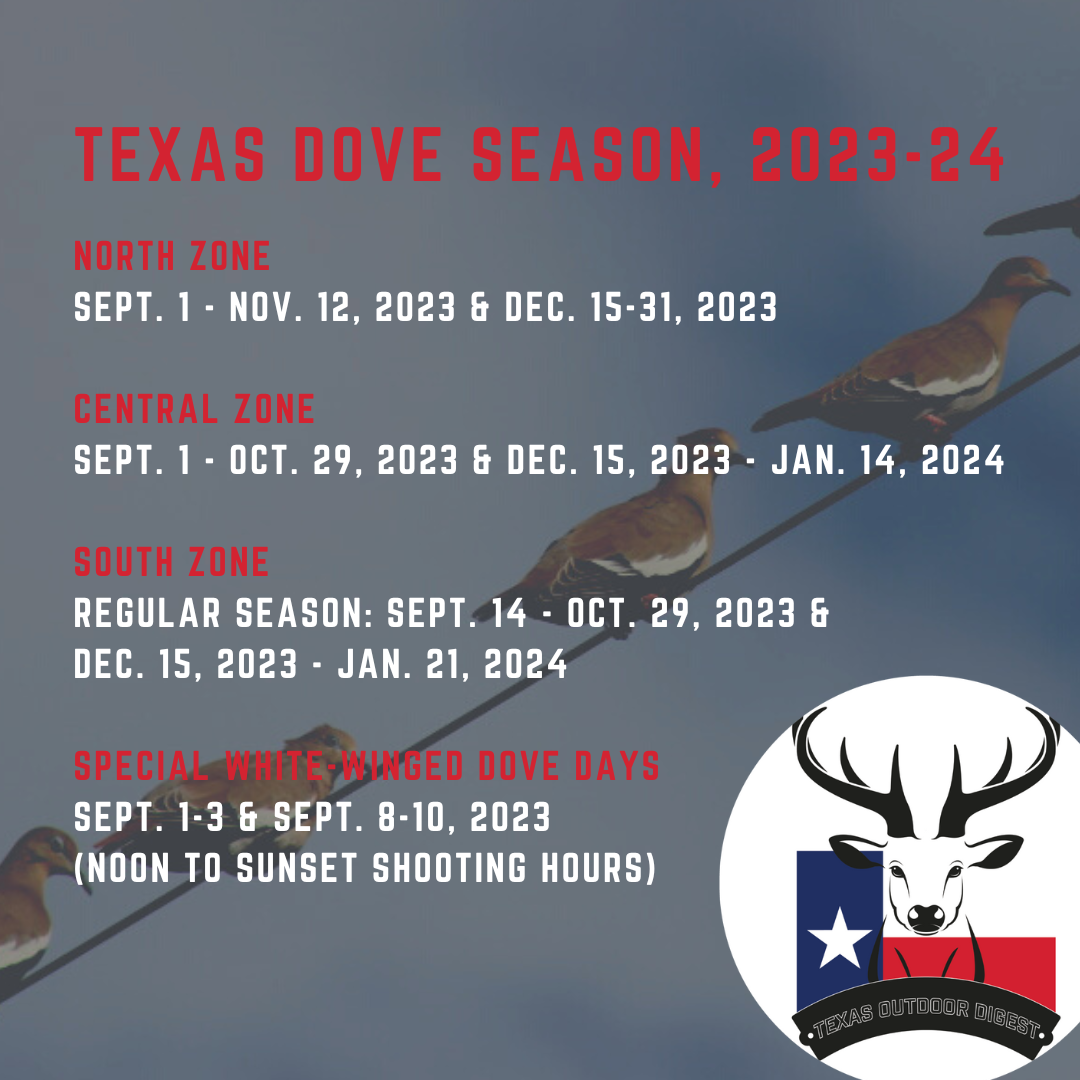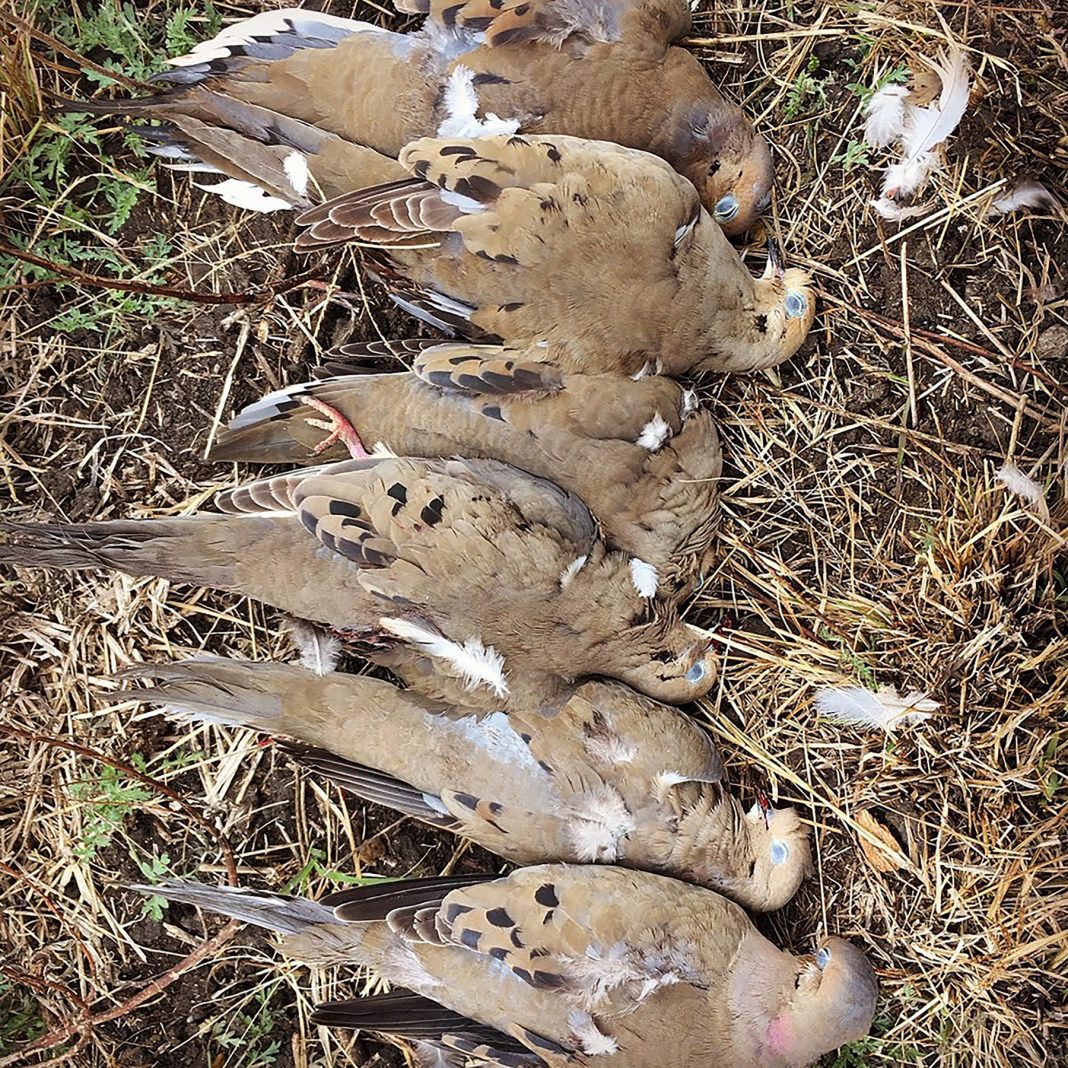
If there’s one thing hunters in the Lone Star State can count on, it’s that fall hunting seasons are almost here.
And once again, the dove hunting forecast is looking good.
Texas boasts fall dove populations in excess of tens of millions of birds and its roughly 300,000 dove hunters harvest more than 6 million mourning doves and white-winged doves or nearly 30% of all doves taken in the United States, according to the Texas Parks and Wildlife Department. Dove hunting also contributes hundreds of millions of dollars to the state economy, according to state and national hunting data.
Dove hunting provides an entry into the sport of hunting because it is relatively economical and accessible. Through its Public Hunting Program, TPWD offers affordable access to quality hunting experiences with the purchase of a $48 Annual Public Hunting Permit.
This year TPWD again has leased tens of thousands of acres of public dove hunting fields, many of which are located near major urban areas. The hunting units are distributed from South Texas to the Panhandle and from Beaumont to West Texas.
Hunters are reminded that in addition to a valid Texas hunting license, certification in the Harvest Information Program is required. HIP certification is offered when you buy your license and involves responding to a few simple questions about your migratory game bird harvest during the previous season. TPWD also is conducting ongoing dove banding research and asks hunters to please report leg bands recovered on harvested birds by calling 1-800-327-BAND. TPWD bands thousands of doves annually across the state. Hunters also may report banded birds online.
Texas Dove Hunting Forecast
As with deer hunting in Texas, dove hunting is a major economic driver, particularly due to the fact that it’s the first framework to open up fall and winter hunting frameworks. Federal estimates have shown that roughly a third of the more than 1 million dove hunters nationally are in Texas and state estimates have shown those hunters pump more than $300 million into dove hunting across the board in average seasons.
Even in years with lower production, the Lone Star State still boasts exceptional numbers of birds (roughly 28 million mourning doves and 12 million whitewings, according to the long-term averages from spring surveys).
Owen Fitzsimmons, dove program leader for TPWD, said the outlook should be on par with previous seasons in terms of numbers and good habitat thanks to having good moisture in the spring.
“In looking at the data, 2021 was the lowest harvest we’ve had on record going back to at least the early 2000s,” Fitzsimmons said. “Last year’s numbers were better and most hunters saw at least average conditions. The hunting in the South Zone was really good as it has been in recent years and I’ve gotten a lot of really good reports out of areas such as between Abilene and Fort Worth that they saw more birds than they had going back a number of years. Those areas have seen tougher hunting and fewer birds in our surveys the past few years.”
The success of any dove season rests on nesting conditions and bird production that always rests on adequate moisture and good range conditions. Fitzsimmons pointed to a relatively cool spring as being beneficial to this year’s dove crop.
“A big part of that also is that we didn’t have a lot of severe storms that bring heavy winds and hail,” Fitzsimmons said. “Those severe storms are detrimental and when they come through areas like the Hill Country and Central Texas, they’ll knock dove nests out of trees easily. They build pretty flimsy nests, but I think this year we got some good rains without those negative impacts, and I think that’s really helped with numbers, too.”
Dove hunting in Texas has been known to be cyclical with multiple-year periods of exceptional harvests followed by years of below-average hunting. Fitzsimmons noted the data shows the pursuit should be on an uptick, especially in locales like the Panhandle that have seen tougher hunting in recent seasons.
“We’ve really been below the long-term average for the past four or five years now,” Fitzsimmons said. “We had a really good few years coming out of 2013 through about 2016 and saw some of the highest harvest years we’ve had in a long time. And after that, it kind of dropped down below average and we kind of stayed there. And that’s where we were last year, too, a little bit below average across the state.
“That could just be due to environmental conditions, and again I think this year we’re going to see those numbers bounce back up. They might not respond to rain as quickly as quail do but they’re still in that kind of boom-and-bust cycle.”
Texas Dove Hunting Tips
Dove hunting typically is easier in dry years although scouting is more important. If you can find sunflowers or goat weed or cut and harvested grain fields, a good source of water nearby with perching trees and good landing areas for dove to get water, then you have the makings of a great dove hunt.
Survey figures in recent years have been promising and show that the end of the breeding season should have reasonably added to the population despite widespread drought, which should set the stage not just for this season but for those in the future. Wetter springs and summers typically make for better nesting and production numbers for doves ahead of the fall season, but the birds are hearty critters that can adapt to drought and survive much the way other wildlife does.
In many locales there have been birds of a variety of ages spotted, which highlights what should be a summer-long hatch. The South Texas dove forecast in particular should be good, if not excellent. Hot temperatures and limited surface water usually make for good hunting late in the day around stock ponds and other supplemental watering areas.
While a little bit of moisture is beneficial to all wildlife throughout the state, rains right before a dove hunting season can make things somewhat tougher for hunters as birds get dispersed. The same also can be said for a cool front, though right now there doesn’t seem to be any real threat of scorching temperatures dropping.
In the early season, doves are not as spooky because they haven’t come under fire. The birds tend to fog in early, but especially in the Texas Panhandle, it seems the first cold norther that hits will drive the birds off. Knowing that, hunters should definitely jump on any opportunities that come their way in early September.
Dove hunters must have their shotguns plugged, meaning the firearm can’t hold more than three shells at a time. Lead shot also may be used only for doves. If you’re hunting teal during that September framework, you need non-toxic shot, steel or otherwise.
Hunters also should be aware of others in a field. In the heat of knocking down a dove and walking over to retrieve it, it is easy to forget where others are placed, especially if they’re moving around to pick up birds too. A good rule to follow is never shoot at low-flying birds. Shotgun pellets can do some damage even at long distances. For that reason, hunters should wear some type of eye protection like shooting glasses or plain sunglasses.
Texas dove hunters burn through shotgun shells with the best of them
2023-24 Texas Dove Seasons
North Zone: Sept. 1 – Nov. 12, 2023 & Dec. 15 – 31, 2023
Central Zone: Sept. 1 – Oct. 29, 2023 & Dec. 15, 2023 – Jan. 14, 2024
Special White-winged Dove Days (entire South Zone): Sept. 1-3 and Sept. 8-10 (special regulations apply)
South Zone, Regular Season: Sept. 14 – Oct. 29, 2023; Dec. 15, 2023 – Jan. 21, 2024
The daily bag limit for doves statewide is 15 and the possession limit 45.
During the early two weekends for the Special White-Winged Dove Days in the South Zone, hunting is allowed only from noon to sunset and the daily bag limit is 15 birds, to include not more than two mourning doves and two white-tipped doves. During the general season in the South Zone, the aggregate bag limit is 15 with no more than two white-tipped doves.


















